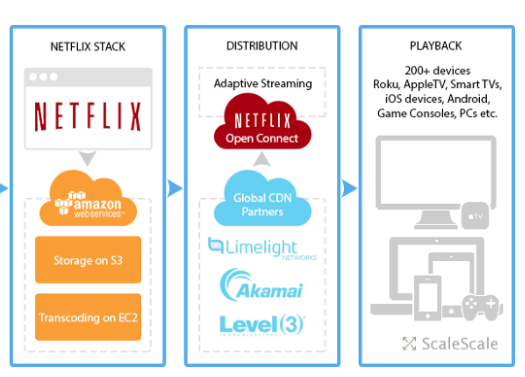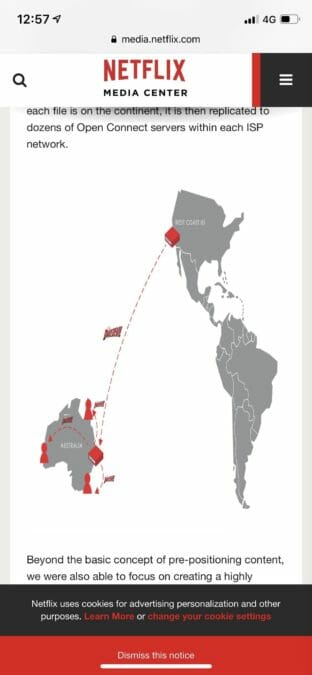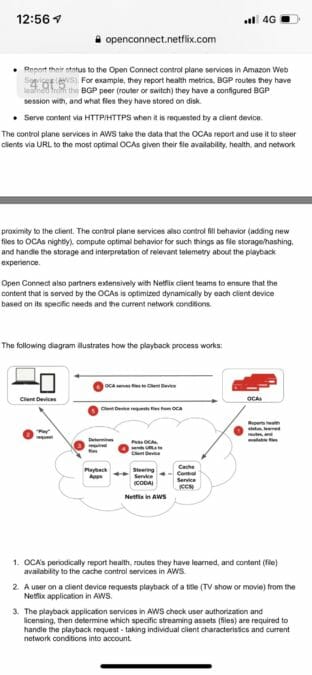There was a time when Buffy was a TV show about vampires, these days, with subscription TV channels such as Neflix, there are lots of shows about vampires, but buffering is a quite different issue. So given this challenge, how does Netflix work? Data Centres play a key role.
Gone are the days when you browsed through TV channels looking for something exciting to watch. Now, you can choose (yay!) what you want to watch and when. Yet, the one pain point that remains for always-on access to high digital quality entertainment is – buffering! More often than not, we choose the plain old 480p SD or 720p (if the network is good) HD quality over the painful buffering anxiety.
But, the times, they are changing. Technologies of the future are almost here. Not only are you able to stream Netflix in HD but in Ultra HD, 4K resolution! And that too without any buffering or lag, with 5G now giving our phones access to blazing speeds, peaking 20 times faster than 4G. With 5G, 4K videos start with no delay or time wasted on buffering.
But how can we achieve fast transmission of these 4K videos – which will bring with them petabytes of data – effectively? Further still, how are we able to stream HD videos on Netflix and YouTube, without any delay? There is a lot going on in the background to manage how such large amounts of data are stored and transmitted over thousands of miles to create a smooth user experience, making Netflix and similar services work they way they should.
Gartner revises down its 2019 IT spending predictions amid data centre decline
Simply put, there are organisations and businesses which specialise in storing data smartly, enabling faster and lag free access whenever needed. For Netflix, it is Amazon Web Services (AWS). According to Statista, in 2018, Netflix was responsible for a staggering 15% of the total downstream internet traffic globally. For 15% of all data transferred over the internet to be courtesy one single online video streaming platform is impressive. How then can AWS manage this data storage and transmission so efficiently, so that Netflix in-turn is able to provide a seamless user experience to subscribers? This is where data centres come into play.
Netflix: going global, getting personal
How does Netflix communicate quickly and securely with its customers on a global scale?
Making Netflix work –The race against time
Let’s consider exactly what happens when you click the play button on your screen. The original source material of the movies or series we watch are sizable, cinema-quality files. These need to be coded and compressed into multiple formats and qualities to be available for streaming on a variety of devices: from 44” 4K Smart TV to 6-inch phone screens. These compressed files can then be stored on a centralised hosting server of a data centre. However, if the viewer is in India and wants to watch the latest season of Stranger Things which is stored in a server in Canada, for example, you would likely expect there to be a lot of lag and buffering right. To combat this, Content Distribution Network (CDN) can come into play. Multiple copies of the compressed encoded file are copied into hundreds of servers across the globe, forming a wider CDN for the likes of Netflix, around the world.
Figure: Netflix content distribution flow 

On a side note, in the case of Netflix, it has its own CDN in the form of Open Connect. Open Connect is a device which stores the most watched content, geography and locally, onto your Internet Service Provider’s (ISP’s) servers. From there, whenever a request is made for a particular content to be played, it is brought in from your ISP’s servers to further reduce latency. The CDN, in the case of Netflix, is simply brought closer to you for a better streaming experience.

(Figure: Netflix Playback Process, Source: Netflix Open Connect Blog)
But, how does the communication or the copy and fetch of data between different data centres and servers happen so smoothly and instantly? This is where optical fibre comes into the picture. With the shift from 1080 to 4K, from downloads to on-demand streaming, data demands are increasing and there is need for fibre – a lot of fibre – to cater for that. Data can literally travel at the speed of light through fibres. That is why, to ensure zero lag and fast speeds, hyperscale data centres which store huge amounts of data are interconnected through ultra-high fibre count cable, with up to 10K fibres running through ducts. Outside of the data centres, data usually travels through a hybrid connection of fibre and copper to your devices. A fast-changing trend of shifting from copper to fibre in the last mile to enable speeds beyond 50mbps to make streaming in 4K a possibility.

Manish Sinha, is the CMO at STL — Sterlite Technologies Ltd
STL is a global leader in end-to-end data network solutions. It designs and deploys high-capacity converged fibre and wireless networks. Expertise ranges from optical fibre and cables, hyper-scale network design, and deployment and network software.







